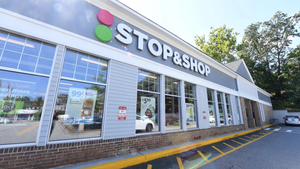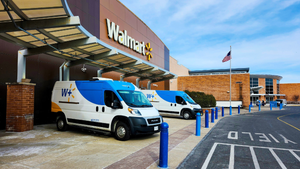- Grocery Wholesale & Distributors
- Legislation & Regulatory News
- Grocery Operations
- Foodservice at Retail
SpartanNash ushers in new go-to-market game planSpartanNash ushers in new go-to-market game plan
Update on corporate supermarket banner consolidation shows strong early results.

SpartanNash is revamping its go-to-market strategy to become more customer-focused, according to President and CEO Tony Sarsam.
Part of a range of transformation initiatives under way at the Grand Rapids, Michigan-based grocery distributor and retailer—including supply chain, merchandising and marketing—the go-to-market effort reflects a companywide push to boost productivity and rein in costs, Sarasam said Thursday in reporting fiscal 2023 second-quarter results.
“We are refreshing our go-to-market strategy. This plan builds on our signature strength of being the most customer-focused, innovative food solutions company,” he told analysts in a Q2 conference call. “Along with providing our customers with enhanced service, the plan is expected to contribute $20 million in run-rate cost savings, starting later this year.” (Call transcript provided by AlphaSense.)
Last fall, SpartanNash announced long-term target to achieve a 40%-plus increase in adjusted EBITDA to more than $300 million by fiscal 2025. Sarsam said the company is well on its way to that goal, expecting to realize over 50% of the total growth benefits from its transformation initiatives by the end of 2023.
“Our team has deliberately developed this plan, which improves both the efficiency and effectiveness of our organization,” Sarsam explained. “Our new go-to market strategy involves: one, realigning all associates who have contact with customers into the sales function and providing our customers with a single point of contact, so their support and service is highly coordinated; two, focusing on operational excellence in our stores by expanding on training and brand standards; three, executing on the value-added service we provide to our independent grocery customers to help them grow; and four, completing integrations from prior M&A activities and setting up an organizational structure that enables easier integrations for the future.”

In its Q2 earnings presentation, SpartanNash outlined the projected benefits from its transformation plans. / Image courtesy of SpartanNash
SpartanNash has declared a strong customer focus, supported by the go-to-market changes, as a “signature strength,” Sarsam noted. “We have the right strategy, teams and capabilities to execute on our long-term plan, and we are in a prime position to grow,” he added.
Through the supply chain and merchandising transformations, SpartanNash projects it will realize $70 million to $90 million in gross benefits by the end of fiscal 2023. The lift from the go-to-market plan stands to kick in thereafter, combining with the supply chain, merchandising and marketing transformations to yield $55 million to $60 million in gross benefits for fiscal 2024-25.
“We strive to support our customers as they grow profitably,” Chief Financial Officer Jason Monaco said in the call. “With the changes from our go-to-market strategy that Tony touched on, we believe we have the right programs and teams in place to provide custom solutions for each customer, both now and into the future. And we remain extremely encouraged that new customers and organic business will help us continue to grow share.”
Including $25 million in supply chain transformation benefits achieved in fiscal 2022, SpartanNash expects a total of $125 million to $150 million through fiscal 2025.
“We’ve launched and made significant progress on our transformational initiatives, and we are advancing our long-term strategic plan with our go-to-market strategy,” said Monaco. “This step further bolsters our confidence in achieving our long-term goals.”
Retail banner consolidation makes strides
Sarsam also reported promising early results for SpartanNash’s retail banner consolidation program, citing strong feedback from shoppers and sales lifts at converted stores.
In November, at its first-ever Investor Day event, SpartanNash unveiled a plan to consolidate retail banners for its corporate-owned supermarkets from about a dozen to four as part of an accelerated growth strategy.
With the move, the company said it aims to create a three-tier retail structure: a conventional supermarket segment under the Family Fare banner, an upmarket segment under the Martin’s Super Markets and D&W Fresh Market banners, and an ethnic segment under the Supermercado Nuestra Familia banner. At the time, SpartanNash had already been changing over some stores to Family Fare. Two stand-alone locations in Michigan, Forest Hills Foods and Ada Fresh Market by Forest Hills Foods, also are slated to remain.

D&W Fresh Market is positioned as one of SpartanNash's upmarket grocery retail banners. / Photo courtesy of SpartanNash
Late last month, SpartanNash reported that its No Frills, Sun Mart and Dan’s Supermarket grocery retail banners have been folded into its flagship Family Fare banner. Seven stores in Nebraska already had been remodeled to the Family Fare format, and another five conversions are due to be completed in North Dakota by the end of summer.
“Another highlight from the quarter relates to our retail banner consolidation work. As we announced last month, we consolidated three brands representing 8% of our store base. These stores were remodeled and rebannered as Family Fare, our flagship retail banner. Shoppers are embracing the enhanced store experience and new loyalty program,” Sarsam said in the Q2 call.
The banner consolidation also will end up refreshing a chunk of SpartanNash’s owned-and-operated supermarkets and, so far, has shown share-building potential.
“Our investments are accelerating growth and delivering bottom-line benefits. Overall, our rebanners and remodels continue to drive double-digit sales growth,” according to Sarsam. “Although a small sample of our total, the upmarket stores that were remodeled last year continued to experience an average sales lift of 17% year over year. Banner consolidation is part of our long-term strategic plan, which leverages the strength and equity of our brands for growth and operational efficiency. As part of the plan, we remain on target to remodel or refresh 25% of our stores.”
Currently, SpartanNash runs 144 stores—mainly under the Family Fare, Martin’s and D&W banners—in Michigan, Nebraska, Indiana, North Dakota, Minnesota, Wisconsin, Iowa, South Dakota and Ohio.
Read more about:
SpartanNashAbout the Author
You May Also Like






